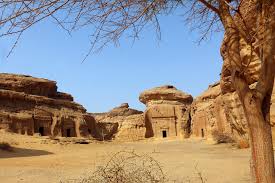Published on : Saturday, June 18, 2022
At the Al-Hijr Archaeological Site, the impact of development of tourism declared the first UNESCO World Heritage Site of Saudi Arabia in 2008. It has been vital since the 2030 Saudi Vision strategy in 2016 was introduced which placed the sites of heritage tourism as major catalysts in the long-term change of the nation to a post-oil economy.
Going back to the first century BC, Al-Hijr is believed as the sister site to Petra, Jordan. The Nabataean nomadic Arabian tribe had constructed both the sites. However, as Petra has turned out to be one of the most popular tourist destinations in Middle East, Al-Hijr stayed on the margin, mainly because of the stringent regulations of Saudi Arabia on foreign arrivals that in recent times expanded outside religious or business travelers.
At present, Al-Hijr is being aimed as new international tourism activity. As the UNESCO listing assisted in fostering the support of local community for tourism because of the new financial opportunities, the proposed development has caused many concerns on the local front, including anxiety on ‘cultural erosion’.
By recognizing the local stakeholder standpoints on Al-Hijr’s embryonic tourism development, Abdulmohsen Alahmadi, research project lead, believes that the study can offer precious recommendations to alleviate rising anxiousness among the local communities.
Mr. Alahmadi said that it was often disagreed that the development and the speed of tourism could lead to ‘irreversible changes’ to the customs and traditions of communities.
Related Posts
Tags: Heritage tourism, saudi arabia, Tourism, Travel, Travel news










